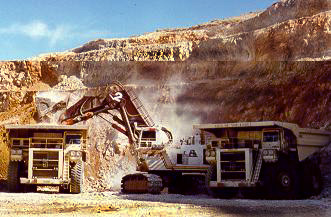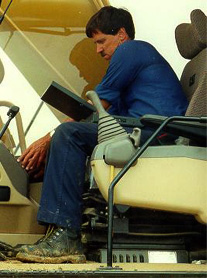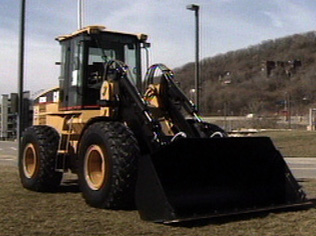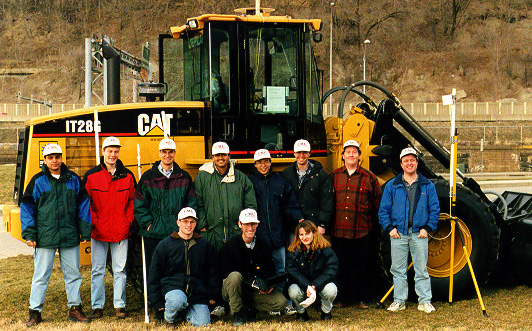 Construction site, Ogden, Utah
Construction site, Ogden, Utah
 Construction site, Ogden, Utah
Construction site, Ogden, Utah
Imagine a remote construction site where bulldozers can be warned that they are
approaching dangerously uneven terrain. Or, a technician several miles away
from the site can diagnose an earth-moving machine's malfunction. This
communication all takes place without wires, antennae or complicated computer
hardware.

Caterpillar and the Information Networking Institute (INI) within Carnegie Mellon's college of engineering are working to make this possible. They are conducting a multi-year research program to develop a mobile wireless communication system like this. Such a system would benefit the construction and mining industries by supporting their field communications.
This type of a system must provide a high-speed communication between earth-moving machines and from machines to the outside world. It needs to support field service by providing remote access to machines and giving field technicians direct access to up-to-date service manuals and data. Additional requirements include allowing dealers to do remote diagnosis of a machine's condition and enabling Caterpillar to field new, high-speed applications.
As if those requirements aren't enough of a challenge, Caterpillar's customers have their own set of needs. The mine and quarry owners require a single site system that is easy to install, operate and maintain. The dealers want a simple technician interface--a rugged laptop as easy to use as a cellular phone.

This demanding set of requirements raises several issues. The system has to handle a wide variety of communications from data and file transfers to real- time data, voice telephony, and, someday, video, radar and laser images. In addition, the system needs to handle emergency stops and deal with uneven terrain. The system also has to work with wireless technology anywhere in the world.
INI and Caterpillar began to meet these challenges. Using an IP-based architecture--basically a sophisticated "Internet in the sky"--they dealt with the issue of moving vehicles. They developed new processes for simple but high-speed networks in mines and quarries. They even created and patented the concept of intelligent protocols that use knowledge of the terrain and vehicle position to enhance reliability and performance.

After demonstrating their first year's work in Pittsburgh and at Caterpillar's Proving Grounds in Peoria, Ill., the researchers continued their efforts. They analyzed computer simulations of Caterpillar machines working in mines and quarries and developed new protocols. Eager to display the fruits of their research, they presented a second demonstration on Carnegie Mellon's campus.
In the demonstration, the university's campus became the location of a supposed dealership and the neighboring Oakland area was used as the dealer's territory. Technology Park, two miles from main campus, was used to simulate a remote mine or major construction site. Since remote mines and major construction sites are the kinds of locations where the largest Caterpillar machines demand the most sophisticated applications, it was an ideal way to test wireless data services.
The demonstration showed successful ad hoc networking, significant protocol improvement using terrain knowledge and transparent use of multiple networks --all while the networks were stressed with heavy communications traffic.
When Caterpillar implements this system into a fleet of "communications ready" vehicles, the mining and construction industries will be thrust into a world of high-speed, mobile communication technology.

In addition, the products are being explored for NASA to apply to multiple spacecraft, space stations and clusters of surface robots as well as for the U.S. Army to use in mobile battlefield equipment.


